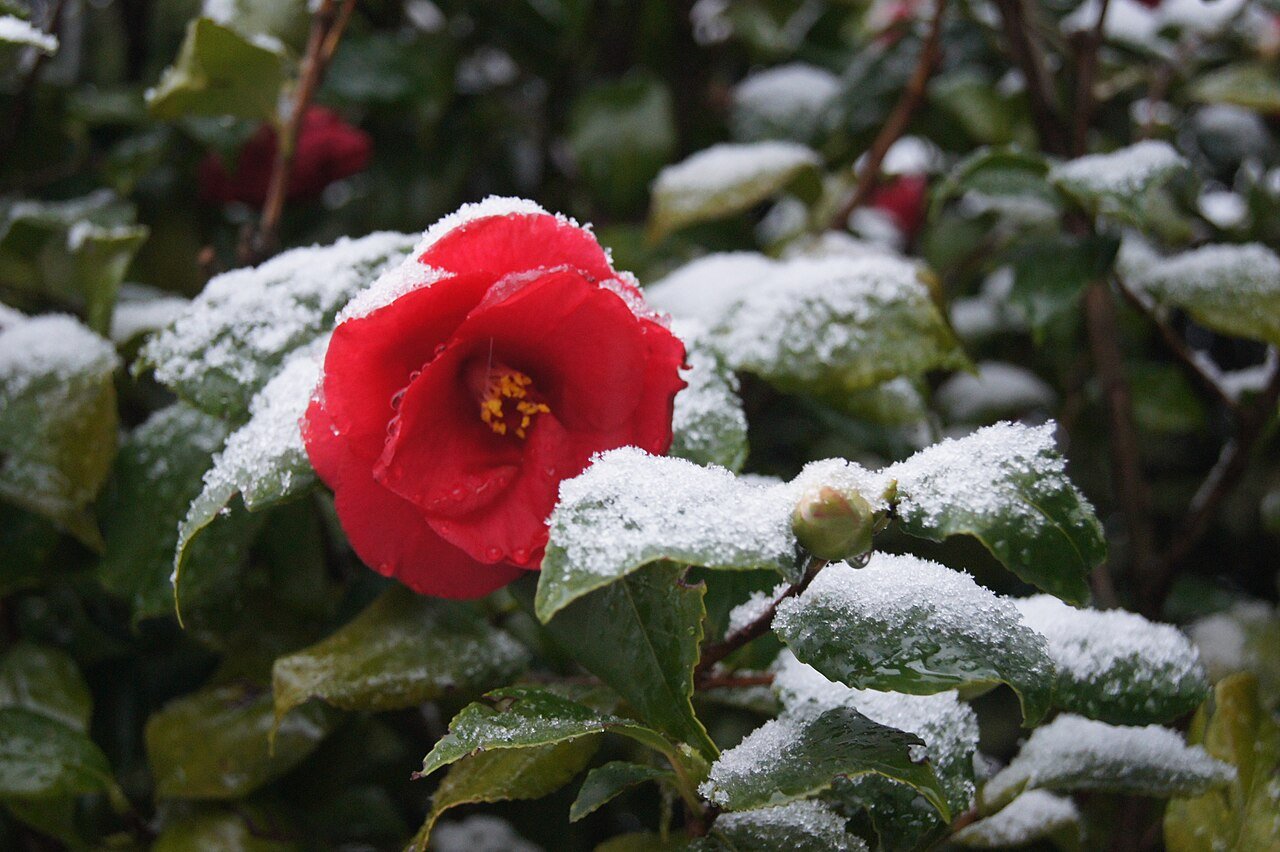Why do some flowers bloom in the winter?
The short answer
Winter-blooming plants evolved to take advantage of the limited competition for pollinators, light, and soil resources. Additionally, some wind pollinators benefit from the leafless winter canopy, allowing their pollen to travel more freely.
The long answer
Spring and summer are the most popular times for plants to flower — and for good reason. The warmer temperatures bring out more pollinators like insects, birds, and mammals to spread pollen and fruit seeds.
However there are some plants who go against the grain (🪵🥁 wood pun) and opt to flower in the winter. Here are three key reasons why some flowers bloom in the winter.
Reason #1: There's less competition for winter pollinators.
Many flowers rely on pollinators to spread their pollen from plant-to-plant and allow them to reproduce. During the colder winter months, the supply of pollinators goes down as they migrate to warmer places or burrow away until temperatures rise.
"Blowing snowy camellia" by Barbara-Ingeborg is licensed under CC BY-SA 4.0.
But while the pollinator population decreases in winter, there are still some insects looking for their next meal. Winter-blooming flowers like camellias (shown above) take advantage of the smaller population of pollinators by blossoming when there is reduced competition from other flowers. Economically speaking, they've carved out a niche in the market of flowers and pollinators.
Likewise, some insects have evolved specific adaptations to take advantage of the limited competition in winter months. For example, there are some species of moths that have antifreeze in their blood so they can continue foraging in the dead of winter.
Reason #2: Reduced foliage clears the way for wind pollination.
As temperatures drop, the leaves on deciduous trees start to fall off, allowing the trees to conserve energy during the darker winter months. For wind-pollinating plants, this creates a unique opportunity — without leaves in the way, pollen can travel to flowers more freely in the open canopy and increase the chances of a successful pollination.
Left: The male catkin of common hazel. Right: The female flower of common hazel.
Left: "shallow focus photography of brown plant" by PickPik. Right: "Corylus avellana 0007" by H. Zell is licensed under CC BY-SA 3.0.
Common hazel is a great example of these winter wind pollinators. In late winter, hazel produces long, pollen-rich male catkins (left) and small, pink female flowers (right). These catkins release tons of pollen which the wind carries to the flowers. Without all the leaves in the way, the pollen has a better chance of reaching the flowers in the winter.
Reason #3: There's less competition for light, space, and soil nutrients.
When most plants becoming dormant in winter, there's opportunity for winter-blooming plants to take advantage of resources without all the competition.
"Snowdrops, Widdrington Parish Church - geograph.org.uk - 6061878" by Graham Robson is licensed under CC BY-SA 2.0.
Plants like snowdrops (shown above) often reside in spots heavily shaded in the summer, under the branches of deciduous trees. But during the winter, snowdrops bloom to absorb all the light unobstructed by leaves. Additionally, they can take in more nutrients from the soil before other plants begin to grow. Snowdrops then store the energy they've gathered during the winter in bulbs underground to last them through their off-season.
🧠 Bonus brain points
Why are some plants "sun-loving" while others are "shade-loving"?
The difference between "sun-loving" and "shade-loving" plants has less to do with how much sun a plant needs and more to do with how efficient a plant is at absorbing sunlight.
"Shade-loving" plants evolved to survive in more shaded areas, which required their leaves to be more efficient at absorbing the limited sunlight. Leaves on these plants, known as shade leaves, generally have more chlorophyll and their chloroplasts move within the cells so they don't block any chloroplasts below them from taking in sunlight. This allows them to soak up more sunshine and also gives them a darker green color.
Conversely, sun leaves adapted in sunny areas, so they are less efficient at absorbing sunlight and more protective against sun damage. In sun leaves, the chloroplasts take turns between being closer to the sun and hiding under the shade of other chloroplasts. Additionally, sun leaves have more red anthocyanin pigments which help protect the chlorophyll from sun damage.
Curious about how the world works?
Today You Should Know is a free, weekly email newsletter designed to help you learn something new every Friday.
Subscribe today 👇
Check out some other curious questions:
Sources
Doucet, D., Tyshenko, M. G., Davies, P. L., & Walker, V. K. (2002). A family of expressed antifreeze protein genes from the moth, choristoneura fumiferana. European Journal of Biochemistry, 269(1), 38–46. https://doi.org/10.1046/j.0014-2956.2001.02628.x
Enroth, C. (2021, October 29). What makes plants bloom at different times of the year?. Illinois Extension. https://extension.illinois.edu/blogs/good-growing/2021-10-29-what-makes-plants-bloom-different-times-year
Field Studies Council. (2023, December 20). Comparing Sun and Shade. Field Studies Council. https://www.field-studies-council.org/resources/14-16-biology/photosynthesis/comparing-sun-and-shade/
Jorge. (2022, October 12). Why do Plants Flower in Winter?. Primrose Garden Club. https://www.primrose.co.uk/blog/plants/flowers-gardening/why-do-plants-flower-in-winter/
Westwood Gardens. (2024, June 3). Plant light requirements: What does full sun, part sun, and shade mean?. Westwood Gardens. https://www.westwoodgardens.com/blog/plant-light-requirements-what-does-full-sun-part-sun-and-shade-mean








It’s like an American accent but with calendars.